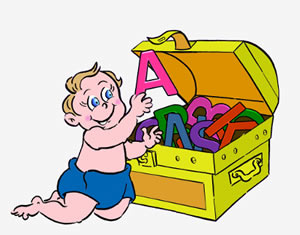The Difference between Written and Spoken English
Introduction
There has been a surge of interest that is
researching the differences between written and spoken language. The research
of comparing structural characteristics vs. discourse analyst and
sociolinguists concluded that the main difference between speech and written
language are sounds and letters, permanency and redundancy, formality and
function, vocabulary and sentences, strategies as well as the interaction
between the speaker and listener. This essay will define language and will
highlight the element in written English and spoken English. It will compare
and contrast the listed criteria of the written and spoken language.
Definition
of Language
Language is a productive complex system that
is used by human being to convey their message from message from one to another
individual, control another person, event or relationship, express our inner
thought and emotions. According to Norquist, human utilize arbitrary signals,
such as voice sounds, gestures, or written symbols. The Oxford Dictionary
supports this definition as it stated that a language could be either spoken or
written as long as the words are structurally and conventionally used. As
Samuel Taylor Coleridge said "Language is the armory of the human mind,
and at once contains the trophies of its past and the weapons of its future
conquests.
Written
Language
The written language usually follows and
support a spoken language as supported by Aristotle’s once said that the
writing is a presentation of a speech. Bloomfield, 1933 con with this as he
said written language is a record of the spoken language. However, the written
language evolved through morpheme writing, terminating in a combination of
phonetic and semantic elements with neophenogenetic principle to be a more
developed language. (Coulmas, 1997). The basic unit of written language is the
sentence. Written communication needs to be learned. This is supported by the
research of DeFord, 1980. He concluded that “learning to write is initiated
tacitly, as in oral language”.
A
language recorded is more precise as greater though, is placed in it and the
words are deliberately selected. The writer can rewrite and refine the message
countless time and over a longer period of time. The written language is
usually permanent and once it is printed is difficult to be rectified.
As the saying goes the pen is mightier than
the sword. It’s non retractable, so
be careful what you write. Written
communication can be carefully analyzed and read repeatedly. In addition, both the writer and reader can
control the pace of the interaction. Since,
written language does not receive an immediate reply except in the case of
computer mediated communication. Therefore, the reader or the writer cannot ask
or clarify things if additional information is needed. Hence, writing is a
fairly static form of transfer.
Furthermore,
the monologist of the written communication uses less of the first and second
pronoun compared to spoken language. Written
language tends to be more complex and intricate than speech with longer
sentences and many subordinate clauses. The punctuation and layout of written
texts also more complex informative or academic form of
text which has high content words such as nouns, adjective, verbs and adverbs
which are used to explain information.
According to Schleppegrell, 2004 written
language plays a major role in making meaning as the resources used in school
had expanded beyond the resources which are required for daily interaction to a
more technical and abstract meanings necessary for construing academic
knowledge. This because, spoken
language’s syntactical properties are less formal than those of written
language. Firstly, it is more organized with paragraphing; it can be
deliberately styled using punctuation, headings, layout, colors and other
graphical effects in their written texts.
Spoken English
Language
is primarily speech. Speech is the representation of the experiences of the
mind. (Aristotle, n.d.). Lieberman
supports Aristotle’s
statement
be reinforcing that speech is so essential to our concept of intelligence that
its possession is virtually equated with being human. Animals who talk are
human, because what sets us apart from other
animals
is the “gift” of speech.
The basic unit of spoken language is the
tone group. Speech consists of two types of basic units: 'Phonemes' or units of
sound, which are themselves meaningless, are combined into 'morphemes', which
are meaningful units; so the phonemes /b/, /e/, /l/ /t/ form the word
'belt'. Jared Diamond identifies the greatest step in language evolution as the
progression from primitive, pidgin-like communication to a creole-like language
with all the grammar and syntax of modern language.
Speech is naturally picked up and write
formally at school Based upon the principles of Skinnerian behaviorism,
Relational Frame Theory (RFT) posits that children acquire language purely
through interacting with the environment. Most spoken language is spontaneous and rapid
and usually involves thinking on the spot. However, formal spoken language such as can be
accurate, but it's a great deal of preparation and compression.
As one speaks, the audience provides its own
visual cues about whether it is finding the argument coherent, comprehensible,
or interesting. Speakers should avoid
focusing on single individuals within an audience. The spoken language utilizes first and second
person in spoken language mainly expresses the speaker's desire of interaction
with their participants or audience so as to get closer to them.
Based on this point the monologues of the
written communication uses less of the first and second pronoun compared to
spoken language. In contrast, in speech the language is more dialogues in
nature as there is a dynamic interaction between two or more individuals. Spoken
language is spontaneous and transient, unless recorded, and speakers can correct
themselves.
Once spoken, words cannot be retracted,
although one can apologize for a mistake and improvise a clarification. Halliday said that spoken language is more
complex than written language in terms of its grammatical intricacy. Based on the example given from the LTTC Unit
1 reading materials: Context and shared
knowledge play a major role, so it is possible to leave much unsaid or
indirectly implied. Spoken language can be delivered using various gestures,
intonation, inflection, volume, pitch, pauses, movement, visual cues such as
appearance, and a whole host of other ways to communicate meaning. Some words
and constructions such as “ thingamajig” and “ whatchamecallit ”
,
and phrases like“ bla bla bla” only occur in spoken language.
Spoken language contains less around 16.4%
of verbs that occurs in the non finite clause while in written discourse the
non finite clauses accounts for 27.5% of all the verbs. Spoken register has a lower nominalization
frequency There is a bigger grammatical deviation in spoken language due to
local dialects and shortage of mental processing capacity during conversation
as grammatical disfluencies were transcribed in fidelity to the original
speech. Grammatical deviations from the standard grammar are more frequent in
spoken language. Such deviations are due
to local dialects as well as shortage of the mental processing capacity, which
seems to be excessively engaged by focus on the content or other issues. The other factor is due to speaker’s language deficiency.
Spoken language accommodates more clauses
and prepositions. The spoken language carries less lexical items, but is more
complex in terms of grammatical intricacy. Normally genre analysis is conducted
in written language on the grammatical and linguistic structure. The studies on
grammar, linguistic structures (mainly in structuralism), and genre analysis
have frequently been based and conducted in writing language. The way
spoken language differs from written language lies in their functions. We can
express ourselves intimately in a speech by “I donno-La, her bf left
her ” and hug her friend to console her.
In contrast, this situation is rare in
writing. Furthermore, there are some small words like discourse markers in a conversation
that does not appear in written .An example of a transcript of two teenagers
plating “Scruples” from Exploring English reproduced by New Zealand’s Ministry
of
Education:
C: Do you put them face down - hang on
H: Oh - ha
C: Then we get one ballot card each and you
put them aside until the vote is called
V: Oh - sorry
Spoken language describes
"actions" while writing, language expresses "things".
Halliday, 2002 elaborates that in many written text, especially the academic
genre, there is a buildup of abstraction and this nominalization turns
actions into things. The main
differences are sum up in a comparison chart Basis Written Communication Spoken
Communication Form Essentially words Essentially sound Basic Unit Sentences
Tone Group Formality
It is more formal “Would you
like to have lunch?”
It is less formal unless in planned
speech “You wanna have lunch?”
Interaction
and Feedback
It
is planned and feedback will take time. It is spontaneous with immediate feedback
Accuracy . It is more precise as the
response is carefully planned . It is less accurate in conversation and is
accurate in speech Acquisition .
The person needs to be trained and learned. The person pick up naturally through exposure
and meaningful communication Record. It is recorded permanent. There is no record unless effort is made to
record.
Mistakes
It
is hard to be rectified Once spoken, words cannot be retracted, although one
can apologize for a mistake and improvise a clarification.
Legality
It
can be considered as a legal document. It cannot be admissible as a legal evidence
Delivery. It can be written on any surface or medium .
It is more organized with paragraphing and can be deliberately styled
using punctuation, headings, layout, colors and other graphical effect letters,
words, sentences, paragraphs etc) have the character of objects. It is
spoken and in order to stress intonation , gesture and inflection, volume,
pitch, pauses, movement, visual cues is used.
Grammar
It
is lexically dense and has more verbs based phrase and predicative adjective.
The sentences may have many subordinate clauses and uses less of the first and
second pronoun It has fewer complex words and phrases , accommodates more
clauses and prepositions. It carries less lexical items, but is more
complex in terms of grammatical intricacy
Description
The
writing, language expresses "things". Spoken language describes "actions"
READ PAPER
This evident in language acquisition of the
baby that starts with the exposure of the language. Children learn how to speak at home before learning
to read
Conclusion
Halliday
(1989, 2007), Tillmann (1997), Aijmer and Stenström (2004), Wikberg (2004),
Nelson, Balass and Perfetti (2005), Biber (2006), Miller (2006), McCarthy
and Slade (2007) and Wichmann (2007) emphasize the different nature and aspects
of written and spoken discourse, implicationally instilling the worthiness of
further research on the differences between written and spoken discourse
Language is not only the vehicle of thought, it is a great and efficient
instrument in thinking. Both spoken and written languages are equally
important. Both spoken and written dialects are linked to the social
background, age, race, and gender of the writer, speaker and
audience.

 Language
is the primary form of communication that humans use. However, language
is not something that is taught to children. A child will pick up
his/her native language just by being around other people, mainly their
families. This is called language acquisition. The child acquires the
language without any conscious thought or study.
Language
is the primary form of communication that humans use. However, language
is not something that is taught to children. A child will pick up
his/her native language just by being around other people, mainly their
families. This is called language acquisition. The child acquires the
language without any conscious thought or study.